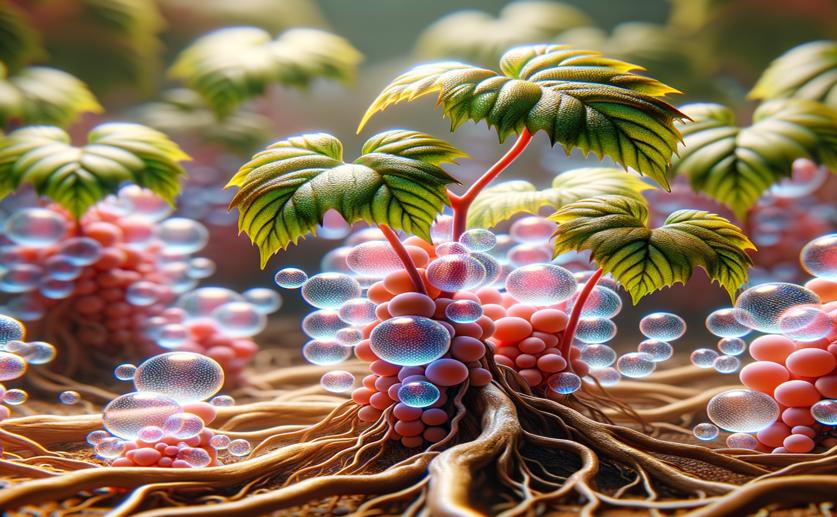
Polystyrene Nanoplastics in Grape Seedlings: Effects on Genes and Metabolism
Jenn Hoskins
23rd August, 2024

Image Source: Natural Science News, 2024
Key Findings
- The study by the Xinjiang Academy of Agricultural Sciences found that polystyrene nanoplastics (PS-NPs) can be absorbed by grapevine roots and transported to stems and leaves
- Advanced imaging techniques revealed that PS-NPs accumulate on the cell walls of grapevine roots, stems, and leaves, indicating upward transport through the plant's xylem
- The presence of PS-NPs significantly affected several molecular pathways in grapevines, including hormone signaling and biosynthesis processes, suggesting potential ecological risks
EnvironmentBiochemPlant Science
References
Main Study
1) Visual observation of polystyrene nano-plastics in grape seedlings of Thompson Seedless and assessing their effects via transcriptomics and metabolomics.
Published 21st August, 2024
https://doi.org/10.1016/j.jhazmat.2024.135550
Related Studies
2) Uptake and Accumulation of Nano/Microplastics in Plants: A Critical Review.
3) Stress response to oxytetracycline and microplastic-polyethylene in wheat (Triticum aestivum L.) during seed germination and seedling growth stages.
4) Contribution of strigolactone in plant physiology, hormonal interaction and abiotic stresses.



 30th July, 2024 | Greg Howard
30th July, 2024 | Greg Howard